Ziegfeld Girl

Brief Synopsis
Cast & Crew
Robert Z. Leonard
James Stewart
Judy Garland
Hedy Lamarr
Lana Turner
Tony Martin
Film Details
Technical Specs

Synopsis
In the 1920s, many girls dream of becoming "Glorified American Girls" in Florenz Ziegfeld's Broadway shows. One such girl is Sheila Regan, an elevator operator from Flatbush, who receives an audition after a chance encounter with Ziegfeld. Another hopeful is teenager Susan Gallagher, who has an act with her father "Pop," an old vaudevillian. At the audition, European immigrant Franz Kolter, a concert violinist, tries out for a job in the orchestra but is turned down because he is "too good," while at the same time his beautiful wife Sandra attracts the attention of the show's singing star, Frank Merton, who recommends her to dance director John Slayton. When Sandra later tells Franz that she has a job, he is furious and forces her to chose between him and the show. Realizing that Franz does not trust her, Sandra leaves him. On the first night of the show, all three women are a success. Sheila catches the eye of millionaire Geoffrey Collis, angering her fiancé, hard-working trucker Gilbert Young. They quarrel, and soon Sheila is mentioned in the columns as stepping out with Geoff, who gives her a new apartment and jewelry. When Gil goes to her new apartment and produces a marriage license he has just bought for them, she shows him her new clothes and furs. He angrily walks out, after which her maid, Annie, gives her a stiff drink. Sandra, meanwhile, continues seeing Frank, who is also married, but lets him know that she is not romantically interested in him. Soon the show is about to move to Palm Beach and Pop's old friend, Al Shean, asks him to go on the road with him. Pop does not want to leave Susie, but when he realizes that her career will be better off without his old-fashioned advice, he leaves, telling her that she will be fine on her own. In Palm Beach, while Sandra dreams of Franz, Sheila has developed a serious drinking problem, which worries the maternal Susie. When Susie talks to Geoff about Sheila, he says that he plans to propose that night. At a casino, Sheila's boisterous drinking and winning streak at the crap table attracts the attention of champion boxer Jimmy Walters. She coldly dismisses him, then sees Gil, who has become a bootlegger, working for gangster Nick Capalini. She tries to reconcile with him, but the now embittered Gil leaves after she asks him to kiss her. Geoff sees them and changes his mind about proposing. Some months later, a new Ziegfeld show has started rehearsals in New York. Frank's wife comes to see Sandra, knowing that Frank wants a divorce, but when she realizes that Sandra is in love with her own husband, the two women part as friends. Sandra then concocts a scheme in which lead violinist Mischa will pretend to go away to visit a sick relative so that Franz can take over Mischa's position in the show's orchestra. On opening night, Franz finds his own violin, as well as a loving note from Sandra, in Mischa's case. Meanwhile, Sheila goes to see Gil, who has been convicted of bootlegging. When she says that she has not seen Geoff for months but is sure that he will help, Gil sends her away and she goes to a speakeasy. Later, as Sheila's number starts, former showgirl Patsy Dixon tries to convince a drunken Sheila not to go on, but she will not listen. Susie is a huge success in the show, as are Pops and Al, whom Susie brought into the show, but Sheila is so drunk that she falls off stage. Slayton angrily dismisses her, but things go better for Franz, who reconciles with Sandra and gets encouragement from Ziegfeld's righthand man, Noble Sage. As time passes, Sandra retires to accompany Franz on tour, while Sheila goes from man to man and eventually becomes a broken alcoholic. In a speakeasy, she runs into Jimmy, who is also down on his luck. Bitterly remembering their first meeting, Jimmy insults, then strikes her, and she collapses. At Sheila's parents' home, Gil, who is now out of jail, visits her. Sheila's kid brother Jerry tells him that the doctors have little hope, but Sheila does not know how sick she is. When Gil tenderly talks about raising ducks at his newly bought farm, she asks to hold their long-expired marriage license. After he leaves, she decides to go to the opening night of the latest Ziegfeld show, in which Susie is the headliner. During the performance, Sheila becomes gravely ill and collapses. In Ziegfeld's office, as the show's finale is performned, Franz and Sandra visit her, and in a weak voice, she talks of raising ducks with Jimmy.

Director

Robert Z. Leonard
Cast
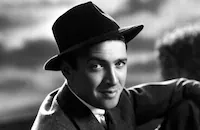
James Stewart

Judy Garland

Hedy Lamarr
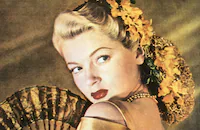
Lana Turner

Tony Martin

Jackie Cooper
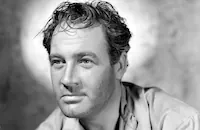
Ian Hunter

Charles Winninger

Edward Everett Horton

Philip Dorn

Paul Kelly
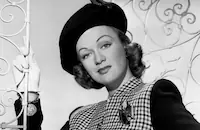
Eve Arden

Dan Dailey Jr.
Al Shean

Fay Holden

Felix Bressart

Rose Hobart
Bernard Nedell
Ed Mcnamara

Mae Busch
Renie Riano
Josephine Whittell
Sergio Orta
Antonio And Rosario
Six Hits And A Miss
Music Maids
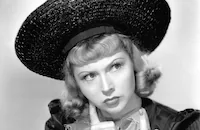
Joyce Compton
Reed Hadley
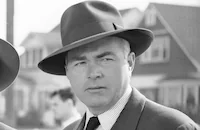
James Flavin

Roscoe Ates
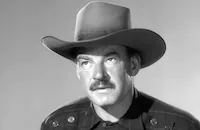
Ray Teal
George Lloyd

Jean Wallace

Patricia Dane

Myrna Dell
Troy Brown Jr
William Days
John Rarig
Max Smith
Elva Kellogg
Dorothy Hoyle
Christine Stafford
Rose Paidar
Betty Allan
Virginia Rees
Helen Patterson
Crew
Adrian
Antonio And Rosario
Leo Arnaud
George Bassman
Busby Berkeley
Pandro S. Berman
Nacio Herb Brown
Harry Carroll
Daniel B. Cathcart
Danny Dare
Jack Dawn
Roger Edens
Ralph Freed
Edward Gallagher
Cedric Gibbons
Red Golden
Ray June
Gus Kahn
Sonya Levien
Joseph Mccarthy
William Anthony Mcguire
Bob Priester
Merrill Pye
Virginia Rees
Marguerite Roberts
Joseph Ruttenberg
Conrad Salinger
Blanche Sewell
Al Shean
Douglas Shearer
Gwen Stith
Georgie Stoll
Herbert Stothart
Edwin B. Willis

Photo Collections
Videos
Movie Clip





Trailer
Film Details
Technical Specs

Articles
Ziegfeld Girl
Great Ziegfeld scenarist William Anthony McGuire was retained to craft a story that would focus on the lives of the showgirls that Florenz Ziegfeld so famously glorified on Broadway. A 1938 release date was announced, with a slated cast headed by Joan Crawford, Eleanor Powell, Virginia Bruce, and Walter Pidgeon. Multiple factors, including McGuire's passing, spurred numerous production delays, and the project had to be completely recast before the cameras finally commenced rolling for studio standby Robert Z. Leonard.
The narrative (completed by Marguerite Roberts and Sonya Levien) focuses on a trio of young beauties and how they entered Ziegfeld's orbit. Brooklynite Sheila Regan (Lana Turner) is a department store elevator operator who discovered to her mortification that the patron who offered her a Follies audition wasn't just handing her a line. The song and dance skills of teenage vaudevillian Susan Gallagher (Judy Garland) get her in the door, despite the hopelessly old-school coaching provided by her trouper father (Charles Winninger). Emigre Susan Kolter (Hedy Lamarr) merely waited dutifully in the wings as her struggling classical violinist husband (Philip Dorn) halfheartedly auditioned for the Ziegfeld orchestra, and obtained a contract on the spot with her exotic beauty.
Of the three, it's Sheila's story arc that drives Ziegfeld Girl forward. Although she initially promises her minimum-wage trucker fiancee (James Stewart) that nothing would change between them, the lure of penthouse living, late night clubbing, and wealthy stage-door johnnies bearing gifts proves too much for the relationship to bear. Over time, the fast lane leaves Sheila ever more dissolute and sickly; the embittered Gil drifts into bootlegging, finally pocketing the big money that he could never offer her.
Susan struggles chiefly with the guilt of leaving her dad and his hokey stylings behind in order for her career to take off. Sandra's husband chafes at her becoming the primary breadwinner, and she is driven to a dalliance with handsome Ziegfeld tenor Frank Merton (Tony Martin), who also happens to be very married.
Pandro S. Berman, on his first effort for MGM since shepherding RKO's musical unit through the '30s, culled the foremost talent working to develop the look of Ziegfeld Girl. Cedric Gibbons designed the remarkable spiral staircase sets on which the ladies paraded, each bedecked in costumes by Adrian that seemed to try to top one another for outrageousness. (One chorine's swan bodice seemed to presage the Oscar-night look adopted by Bjork a few years back.)
Moreover, Busby Berkeley was brought in to helm the film's two most lavish set pieces - Garland's rousing calypso number "Minnie From Trinidad," and the finale in which Martin introduced the Gus Kahn/Nacio Herb Brown staple "You Stepped Out of a Dream." "Each girl emerged from a misty cloud effect, dripping with silver sequins," cinema's consummate showman recalled for The Busby Berkeley Book. "With all due respect to the master, Ziegfeld could never have done on a stage what we did in that finale."
Acknowledgment has to be given to the other members of the large supporting cast, all of whom acquit themselves well. Edward Everett Horton and Paul Kelly click as Ziegfeld's seen-it-all right-hand men, and Ian Hunter brings weight as Sheila's primary old-money suitor. Dan Dailey is memorable as a pug Sheila encounters on the way up (and on the way down) and Eve Arden, dependable as a been-around-the-block chorus veteran. Jackie Cooper gets to pull the plots together as Sheila's kid brother and Susan's love interest. Longtime Laurel & Hardy foil Mae Busch is on hand as a wardrobe mistress; vaudeville veteran (and uncle to the Marx Brothers) Al Shean joins Winninger in a redemptive reprisal of Mr. Gallagher And Mr. Shean.
Of the principals, Turner reaped the greatest professional benefit from Ziegfeld Girl, as the project's success lifted her from series and programmers and placed her squarely on the A-list. Stewart, who ostensibly got top billing for a supporting performance on the prestige of The Philadelphia Story (1940), would have to wait for the Armistice to resume his career in Hollywood. While Garland privately despaired of her role's lack of adult glamour relative to those of her co-stars, her vocal performances in the film burnished an already impressive portfolio and remain amongst her most fondly remembered.
Producer: Pandro S. Berman
Director: Robert Z. Leonard
Screenplay: Marguerite Roberts, Sonya Levien, William Anthony McGuire (story)
Cinematography: Ray June
Film Editing: Blanche Sewell
Art Direction: Cedric Gibbons
Music: George Stoll
Cast: James Stewart (Gilbert Young), Judy Garland (Susan Gallagher), Hedy Lamarr (Sondra Kolter), Lana Turner (Sheila Regan), Tony Martin (Frank Merton), Jackie Cooper (Jerry Regan), Ian Hunter (Geoffrey Collis), Edward Everett Horton (Nobel Sage), Eve Arden (Patsy Dixon), Charles Winninger (Ed 'Pop' Gallagher).
BW-133m. Closed captioning.
by Jay Steinberg

Ziegfeld Girl
Quotes
Trivia
Planned in 1938 to be made with Eleanor Powell and Virginia Bruce.
The final shot of the "You Never Looked So Beautiful Before" number is recycled from "A Pretty Girl is Like a Melody" from Great Ziegfeld, The (1936). For the sake of continuity, 'Garland, Judy' is costumed and made up to resemble Virginia Bruce, who crowned the "Wedding Cake" set in the earlier film.
Notes
The film's written prologue reads: "That Fabulous Era-when Florenz Ziegfeld Glorified the American Girl, and New York wore her over its heart like an orchid-while she lasted." Although theatrical impressario Florenz Zeigfeld, Jr. (1867-1932) is mentioned throughout the film, he is not represented onscreen, nor is the word "Follies" used. In addition to the songs listed above, portions of the songs "Whispering" and "You Never Looked So Beautiful" were also performed. Some of the production numbers in the film were reminiscent of those in the 1936 M-G-M film The Great Ziegfeld, a biography of the producer that was also directed by Robert Z. Leonard, and starred William Powell in the title role.
The famous "Wedding Cake" set from The Great Ziegfeld was recreated for Ziegfeld Girl, with Judy Garland situated at the top of the structure, just as actress Virginia Bruce had been in the 1936 film. Small portions of the "You Gotta Pull Strings" and the "Harriet Hoctor Ballet" numbers were also recreated. Rights to the use of Ziegfeld's name and productions May have been obtained through the original negotiations for The Great Ziegfeld (see AFI Catalog of Feature Films, 1931-40;F3.1728). According to modern sources, "Sheila Regan," the character played by Lana Turner, was inspired by actual Ziegfeld Follies star Lillian Lorraine, who once had a drunken fall into the orchestra pit during an elaborate number. Al Shean, who plays himself in the film, was half of the famous vaudeville team "Gallagher and Shean."
In a July 1938 news items in Hollywood Reporter, Joan Crawford, Eleanor Powell, Margaret Sullavan and Virginia Bruce were mentioned as possible stars of the film, but when production was delayed for over two years, the entire announced cast was changed. Other news items noted that Frank Morgan was originally cast in the film, which was to include the following women as "Showgirls:" Nina Bissell, Louise La Planche, Lorraine Gottman (Leslie Brooks), Madeleine Martin and Alaine Brandes. Morgan was not in the released film, and the appearance of Bissell, La Planche, Gottman, Martin and Brandeis has not been confirmed.
Additional news items note that when the film was previewed, the character of "Sheila Regan" died at the end, but audience reaction was so negative that the ending was changed to allow her to live. The viewed print, and the studio summary included in the press information in the AMPAS Library file on the film are ambiguous about Sheila's fate. When Sheila is talking hopefully about her future with "Gil", the scene switches to the onstage finale and the film ends. Although Sheila does not appear to die, the impression is that she is dying. Modern sources include Georgia Carroll, Virginia Cruzon, Irma Wilson, Vivian Mason and Frances Gladwin in the cast.















